
Lomen Company was an American meatpacking industry, [1] founded in 1914 by brothers Carl and Alfred Lomen in the then Territory of Alaska.

Lomen Company was an American meatpacking industry, [1] founded in 1914 by brothers Carl and Alfred Lomen in the then Territory of Alaska.
The Lomen Brothers invested in the purchase of reindeer herds, and between 1920 and 1929, they mounted a huge structure of slaughterhouses and processing facilities, still getting success with the crossbreeding of caribou and reindeer. [2] Then they proceeded to dominate the export market of reindeer meat and skins for the United States, making inviable the competition for the Inuit small farmers. Between 1914 and 1929, Lomen acquired 14,083 reindeer, at the total cost of US$ 236,156.00. [3]
At Christmas, 1926, in conjunction with Macy's, Lomen developed a clever marketing campaign to publicize its main product: the reindeer. Santa Claus in a sleigh pulled by reindeer, was introduced in several U.S. cities (including Boston, San Francisco, Chicago and Seattle, among others). The Lomen brothers still forged letters published in newspapers, where children asked for the presence of Santa and his reindeer in some cities. It has been argued that the reindeer-drawn sleigh became an integral part of the American Christmas story as a result of this marketing campaign. [4] Reindeer were first associated with Santa Claus a century earlier, in Clement Clarke Moore's poem "A Visit from St. Nicholas", however. [5]
The Lomen Company, however, began to have trouble with the lobby of cattle producers, who lobbied Congress to impose barriers to the promotion and sale of reindeer meat. Before that happened, in 1929, with the crash of 29, the market for Lomen's products began to decline. The final blow was given on September 1, 1937, when the Reindeer Act transferred the possession of all Alaskan reindeer herds to the Bureau of Indian Affairs (and, therefore, for the hands of the Inuit), paying $3 or $4 per head. [3] The Lomen's herds was then acquired by the U.S. government for the gross amount of US$720,000.00. [6]
Only in 1997 a court decision allowed to non-natives to acquire reindeer herds in Alaska. [7]

The reindeer or caribou is a species of deer with circumpolar distribution, native to Arctic, subarctic, tundra, boreal, and mountainous regions of Northern Europe, Siberia, and North America. It is the only representative of the genus Rangifer. More recent studies suggest the splitting of reindeer and caribou into six distinct species over their range.

The Santa Clause is a 1994 American Christmas fantasy comedy film directed by John Pasquin and written by Leo Benvenuti and Steve Rudnick. The first instalment in The Santa Clause franchise, it stars Tim Allen as Scott Calvin, an ordinary man who seemingly causes Santa Claus to fall from his roof to his supposed death on Christmas Eve. When he and his young son, Charlie, finish the late St. Nick's trip and deliveries, they go to the North Pole where Scott learns that he must become the new Santa and convince those he loves that he is indeed Santa Claus.

The Inupiat are a group of Alaska Natives whose traditional territory roughly spans northeast from Norton Sound on the Bering Sea to the northernmost part of the Canada–United States border. Their current communities include 34 villages across Iñupiat Nunaat, including seven Alaskan villages in the North Slope Borough, affiliated with the Arctic Slope Regional Corporation; eleven villages in Northwest Arctic Borough; and sixteen villages affiliated with the Bering Straits Regional Corporation. They often claim to be the first people of the Kauwerak.

St. Lawrence Island is located west of mainland Alaska in the Bering Sea, just south of the Bering Strait. The village of Gambell, located on the northwest cape of the island, is 50 nautical miles from the Chukchi Peninsula in the Russian Far East. The island is part of Alaska, but closer to Russia and Asia than to the Alaskan and North American mainland. St. Lawrence Island is thought to be one of the last exposed portions of the land bridge that once joined Asia with North America during the Pleistocene period. It is the sixth largest island in the United States and the 113th largest island in the world. It is considered part of the Bering Sea Volcanic Province. The Saint Lawrence Island shrew is a species of shrew endemic to St. Lawrence Island. The island is jointly owned by the predominantly Siberian Yupik villages of Gambell and Savoonga, the two main settlements on the island.

The Inuvialuit or Western Canadian Inuit are Inuit who live in the western Canadian Arctic region. They, like all other Inuit, are descendants of the Thule who migrated eastward from Alaska. Their homeland – the Inuvialuit Settlement Region – covers the Arctic Ocean coastline area from the Alaskan border, east through the Beaufort Sea and beyond the Amundsen Gulf which includes some of the western Canadian Arctic Islands, as well as the inland community of Aklavik and part of Yukon. The land was demarked in 1984 by the Inuvialuit Final Agreement.
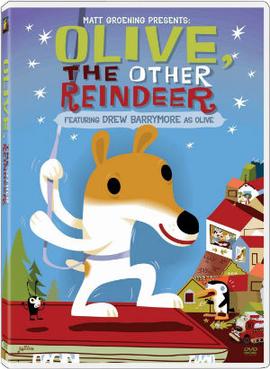
Olive, the Other Reindeer is a 1999 American animated Christmas comedy musical television film written by Steve Young, based on the 1997 children's book by Vivian Walsh and J. Otto Seibold, and directed by Academy Award-nominated animator Steve Moore. The feature was produced by Matt Groening's The Curiosity Company and animated by DNA Productions. Drew Barrymore voices the title character, and she is credited as an executive producer on the special.
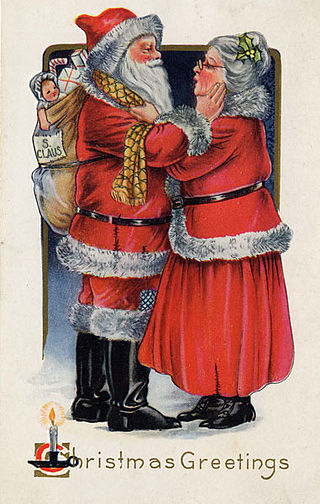
Mrs. Claus, in British English, is the legendary wife of Santa Claus, the Christmas gift-bringer in Western Christmas tradition.
Robbie the Reindeer is a trilogy of three Christmas-themed animated comedy television specials that have been produced by BBC Bristol, Absolute Digital Pictures and Comic Relief. The three television specials have also been premiered on BBC One between 1999 and 2007. The three television specials have also been distributed by BBC Studios and have also been sold to more than 30 countries. The three television specials follow the title reindeer character who travels to the North Pole to follow in his father's footsteps and join Santa Claus's reindeer sleigh team. The first television special and the second television special were animated in stop motion by the BBC Bristol animation unit and originally Aardman Animations, while the third television special was animated in computer animation by Absolute Digital Pictures. Loosely based on Rudolph the Red-Nosed Reindeer by Robert L. May, Robbie the Reindeer was created by Richard Curtis.

In traditional Western festive legend and popular culture, Santa Claus's reindeer are said to pull a sleigh through the night sky to help Santa Claus deliver gifts to children on Christmas Eve.

William Thomas Lopp, known better professionally as W. T. Lopp, and to his family as Tom Lopp, was a member of the Overland Relief Expedition in Alaska, then a U.S. territory. He was a missionary and advocate of turning native hunters into self-sufficient reindeer herders. Lopp Lagoon, an 18 mi (29 km) long bay near where Lopp lived in Alaska, is named after him.
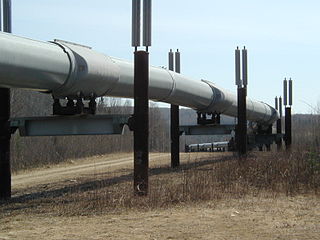
In a report compiled by the government of Alaska, the real GDP of Alaska was $51.1 billion in 2011, $52.9 billion in 2012 and $51.5 billion in 2013. The drop-off that occurred between 2012 and 2013 has been attributed to the decline in the mining sector, specifically the oil and gas sectors, a consequence of declined production. The state's economy has been described by University of Alaska Anchorage economist Scott Goldsmith as a "three-legged stool" – with one leg being the petroleum and gas industry, the second leg being the federal government and the third leg being all other industries and services. Between 2004 and 2006, the federal government was responsible for 135,000 Alaska jobs, the petroleum sector provided 110,000 jobs and all other industries and services combined for 122,000 jobs.

Carl Joys Lomen was an American entrepreneur and photographer. He was known as The Reindeer King of Alaska, because of his role in "organizing, promoting, marketing, and lobbying for the reindeer industry" in the first decades of the 20th century, as president of the Lomen Company.
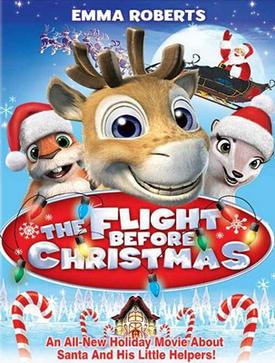
Niko & The Way to the Stars is a 2008 animated Christmas film directed by Michael Hegner and Kari Juusonen. It revolves around a young reindeer named Niko who must overcome his fear of flying by heading to Santa Claus' fell to save him and his fleet of flying reindeer from a pack of wolves. The film was a Finnish production with co-producers in Denmark, Germany and Ireland. It was produced by Anima Vitae, Cinemaker Oy, A. Film A/S, Ulysses Films, and Magma Films. The animation was produced in Finland, Germany and Denmark, with post-production carried out in Ireland. A 45-minute television edit in American English was produced in the United States for CBS under the title The Flight Before Christmas.
Ernest William Hawkes was an American anthropologist best known for his work studying the indigenous peoples of Alaska and northern Canada. A native of Ashfield, Massachusetts, Hawkes was the brother of the well-known "blind naturist" Clarence Hawkes. E. W. Hawkes studied at Dakota Wesleyan University (1909) and University of Pennsylvania.

The Reindeer Act or Reindeer Industry Act of 1937 is a United States federal law passed in 1937 by the U.S. Congress and signed into law by President Franklin D. Roosevelt on September 1 of that year. The act effectively prohibited the ownership of reindeer herds in Alaska by non-Native Americans. The act was intended to provide for Alaskan natives and to allow them to establish a self-sustaining industry. Authority to promulgate rules regarding the ownership and maintenance of reindeer herds was delegated to the Bureau of Indian Affairs via the Secretary of the Interior, who banned most transactions to non-natives.
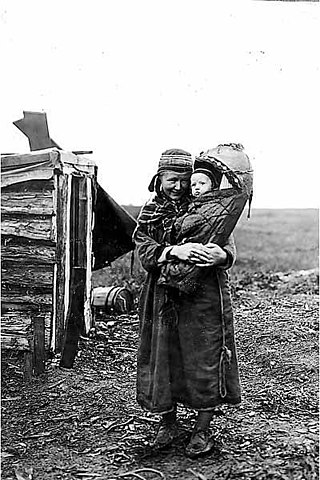
Sámi Americans are Americans of Sámi descent, who originate from Sápmi, the northern regions of Norway, Sweden, Finland, and the Kola Peninsula of Russia. The term Lapp Americans has been historically used, though lapp is considered derogatory by the Sámi.

Alaska Reindeer Service (ARS) was established for the benefit of the U.S. territory of Alaska by Congressional action on March 3, 1893. The ARS was an integral part of the educational system of northern and western Alaska. The superintendent of education of Alaska Natives had general supervision of the work. The district superintendents in northern and western Alaska were supervisors of the reindeer industry within their districts. The first annual expenditure for the period of 1893-94 was US$5,998.

The Christmas Chronicles is a 2018 American Christmas comedy film directed by Clay Kaytis from a screenplay by Matt Lieberman. The film stars Kurt Russell, Judah Lewis, Darby Camp, Lamorne Morris, Kimberly Williams-Paisley, and Oliver Hudson. It is the first installment in The Christmas Chronicles film series. The film was produced by 1492 Pictures and Wonder Worldwide and was released on November 22, 2018, on Netflix.

The St. Lawrence Island famine killed around 1000 people on St. Lawrence Island in the Bering Sea off the Alaskan mainland during the years 1878–1880. Possible causes may have been overfishing, disease, or negative aspects of settler contact.

Reindeer Station is an uninhabited locality in the Northwest Territories, Canada. It is located in the Caribou Hills, along the Mackenzie River's eastern channel. The community was established in 1932 to house a herd of 3,442 reindeer purchased by the Government of Canada. The venture was intended to replace the traditional livelihood of the local Indigenous peoples, but few chose to become reindeer herders, so the government eventually sold the animals. Reindeer Station was abandoned in 1969. Most of its residential buildings were relocated to the larger centres of Tuktoyaktuk and Inuvik.
The Reindeer Industry Act of 1937 gave native Alaskans a monopoly over reindeer, helping native Alaskans to become self-sufficient. But a 1997 court decision has opened the reindeer industry to non-natives, and this threatens the U. S. federal governments obligation to the native Alaskans